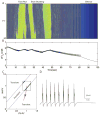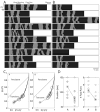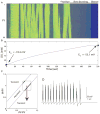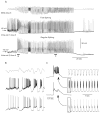Maintenance and termination of neocortical oscillations by dynamic modulation of intrinsic and synaptic excitability
- PMID: 20556224
- PMCID: PMC2885743
- DOI: 10.1017/S147292880700015
Maintenance and termination of neocortical oscillations by dynamic modulation of intrinsic and synaptic excitability
Abstract
Mechanisms underlying seizure cessation remain elusive. The Lennox-Gastaut syndrome, a severe childhood epileptic disorder, is characterized by episodes of seizure with alternating epochs of spike-wave and fast run discharges. In a detailed computational model that incorporates extracellular potassium dynamics, we studied the dynamics of these state transitions between slow and fast oscillations. We show that dynamic modulation of synaptic transmission can cause termination of paroxysmal activity. An activity-dependent shift in the balance between synaptic excitation and inhibition towards more excitation caused seizure termination by favoring the slow oscillatory state, which permits recovery of baseline extracellular potassium concentration. We found that slow synaptic depression and change in chloride reversal potential can have similar effects on the seizure dynamics. Our results indicate a novel role for synaptic dynamics during epileptic neural activity patterns.
Figures





References
Grants and funding
LinkOut - more resources
Full Text Sources
